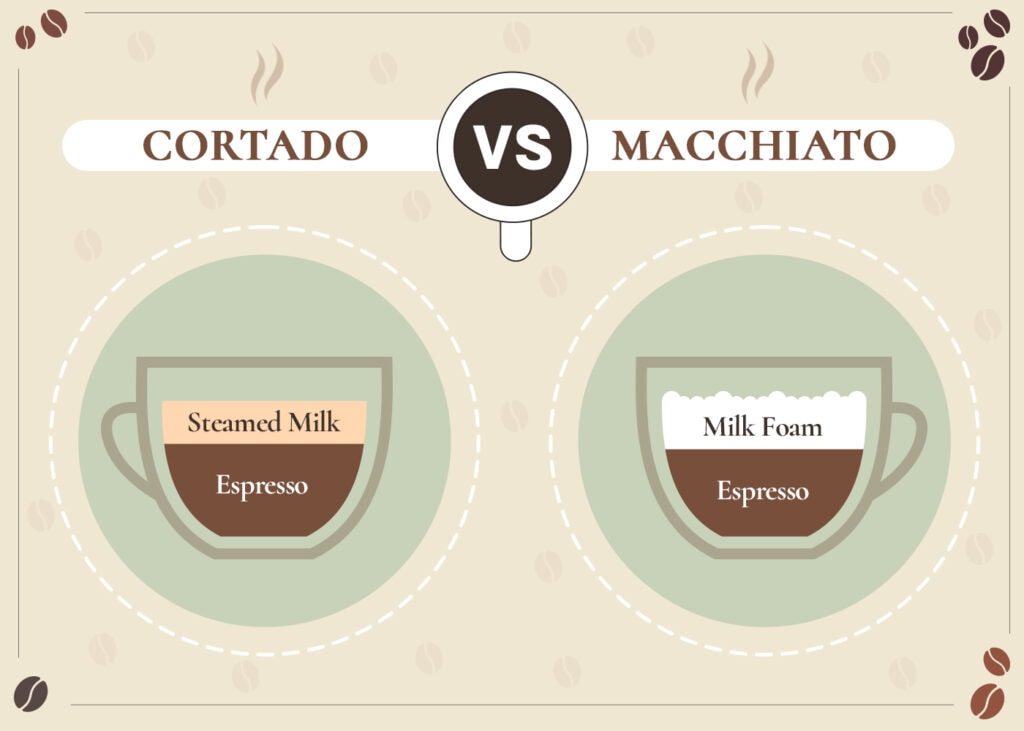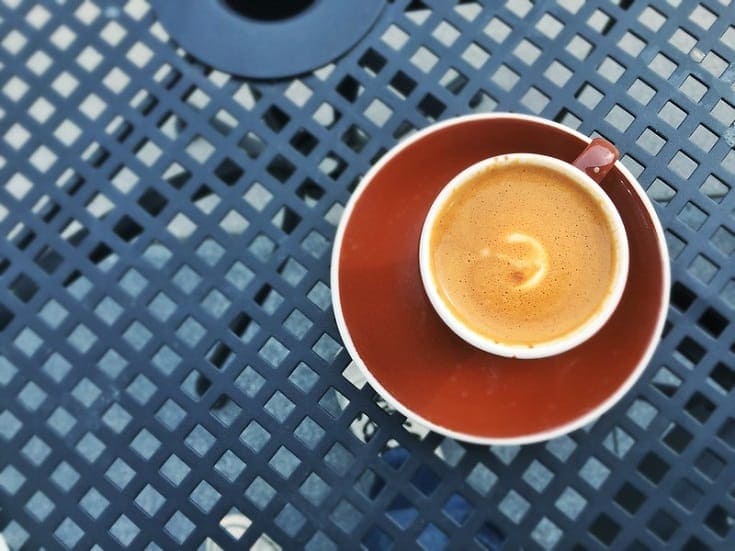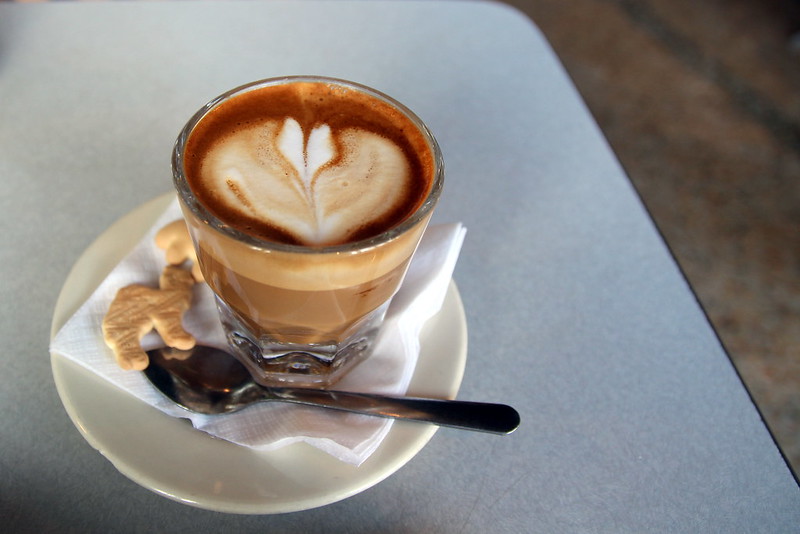
Many coffee enthusiasts are familiar with macchiatos, but may not be as familiar with a cortado. With that being said, even java-lovers may not know the non-American versions of these two beverages nor the subtleties between them. If you have never tried either of these brews, the first thing to know is they are both forms of espresso.
The cortado and macchiato are espressos made in two similar, but slightly different versions. They also hail from different countries and can be enjoyed in different ways at different times. If you are interested in learning about these two coffees, the article below will give you all the details you need to make your next coffee house order.

Overview of Cortado:
A cortado is a form of espresso that originated in Spain. While it is essentially coffee and milk, how it’s blended and prepared makes a considerable difference in the outcome of the flavor, texture, and even the look.
How To Make An Authentic Cortado
This Spanish brew is made in a 4-ounce cup with almost equal parts coffee to milk. In this case, a single espresso is made and added to the cup. Steamed milk is also added to the cup in either an equal amount or slightly more depending on your taste.
It is also important to remember that many traditional Spanish coffee houses use sweetened condensed milk that is steamed in their cortado to give it a slightly sweeter taste. The most important emphasis goes on steaming the milk, however, which is done by warming the milk without frothing. It gives it a shiny look with a smooth texture.

When to Choose a Cortado
This brew, though made with milk, is still a strong coffee due to the espresso base. That being said, those who like a slightly sweeter and creamy shot would enjoy this cup. As mentioned, the cortado can be made with sweetened condensed milk which is going to elevate the sweetness and tone down the bitter taste.
Steamed milk alone also gives the espresso shot a slightly sweeter vibe, while it also creates a smoother texture to enjoy. If you prefer to sip at your espresso, this would be a good option for you. Of course, there are other ways to make the beverage as we will discuss later, but this is how it’s made in many coffee houses across Spain and in the UK.
Difference Between a Cortado and a Flat White
Another caffè that is close (and sometimes mistaken for) to a Cortado is the flat white. While they are made with the same ingredients, the cortado is for those who still want a strong mouthful with some sweetness.
Those who enjoy a flat white, however, get a milder yet still sweet version of the coffee. In essence, the cortado gives you a balance between bold and sweet. To make a flat white, an eight-ounce cup is used with a ristretto shot. If you are unfamiliar, a ristretto is (basically) a smaller shot of espresso. There is also more steamed milk in the flat white.

Overview of Macchiato:
The macchiato is a traditional Italian coffee that is made with espresso and milk. As it stands, this cup has the highest ratio of coffee to milk than any other coffee beverage. Like the cortado above, the way the macchiato is brewed and made plays a big role in the finished caffè. As a flat white is similar to a cortado, in this case, a macchiato is somewhere between an espresso and a cappuccino.
Making a Traditional Macchiato
To make the traditional Italian coffee, you want to start with a three or four-ounce cup depending on what you like. A single espresso is brewed and added to the cup. Now comes the milk. This is where the biggest difference comes between the two brews. The macchiato uses frothed milk instead of steamed milk.

Foamed milk is made by aerating a small amount of the liquid with steam to the point that the milk becomes a foam. Only one or two teaspoons of the foam are added to the top of the espresso. This is also called a “mark of milk.”
The Macchiato Drinker
A traditional macchiato drinker likes the bold, bitter taste of espresso, but wants a little something to ease the palette. A mark of milk is designed to cool down the coffee and take a small edge off of the acidic taste of the brew beneath.
Compared to a shot of espresso, milk is very sweet. Frothing milk, however, doesn’t maintain its flavor the way steamed milk does. It also doesn’t create as smooth of a texture. When you use milk that has been aerated, it has a very light, buoyant consistency. This allows you to have a smoother taste and is typically better enjoyed in a shot like an espresso; although many like to sip this beverage, as well.
Macchiato vs Cappuccino
As we mentioned, a macchiato and cappuccino are two similar drinks. The main difference between the two is the quantities of frothed milk and espresso. Remember, a macchiato has the highest ratio of espresso to milk. A cappuccino, on the other hand, has a lot more milk. The latter drink has some steamed milk, as well. Although, it can be made without it, too.0
In a cappuccino, you use an 8-ounce cup, one espresso shot, a small portion of steamed milk, and top it off with a larger quantity of frothed milk. This brew is designed to be sipped slowly instead of taken down quickly. That being said, the foamed milk with the espresso gives you a heating aspect with the larger cup along with a smoother, less bitter flavor.

It’s also important to note that those who enjoy a macchiato often prefer a dry cappuccino. Just as it sounds, this is a cappuccino made without the steamed milk. Technically, the foamed milk can act as a barrier between the espresso and the air to keep it hotter instead of cooling it down.
What’s more, as it has a considerably higher concentration of milk, you will likely find the cappuccino is a slightly sweeter alternative to the macchiato.

History of the Cortado vs Macchiato:
To get a better understanding of these two tasty coffee drinks, it’s important to understand where they come from. It will also help you understand how they are served, and what variations have come about over time.
The History of the Cortado
The cortado is an espresso drink that showed up in Spain in the early 1960s. The word cortado comes from the Spanish verb cortar that means “to cut”. This term was used as the milk in the cortado is meant to cut through the coffee giving it a sweeter and lighter taste. Cortado is also the past participle of “cortar”. Basically, the word means to dilute coffee or espresso.

The Spanish invented this coffee to be sipped and enjoyed slowly. It’s also important to note that like other caffès made in Spain, it is lacking frothed milk. Most Spanish coffees don’t use foam, and at the very least it is used sparingly.
This brew first popped up in Basque county, Spain, yet it didn’t stay there for long. This drink quickly became popular. It first spread out to Cuba and Portugal. Today, this is a trademark espresso variation in many coffee houses all over the world. The United States along with the UK are two countries that have quickly added it to their list of favorite coffees.
Macchiato’s Back Story
Many of our favorite coffee drinks come from Italy, and the macchiato is no different. This beloved brew is now a common order at most coffee establishments around the world. Again, the United States and the UK are two of the most devout macchiato drinkers, and they have adapted the recipe to suit their needs.
Interestingly enough, the word “macchiato” was originally used as a way for the baristas to differentiate between a standard espresso and one with foamed milk. Macchiato translates in Italian to either marked or stained to describe what the frothed milk does to the coffee.

It is unclear when the espresso macchiato came onto the Italian menu, but what we do know is the reason behind its existence. Italians typically frown on drinking milk after meals or anytime in the afternoon. They also believe the espresso was meant to be consumed quickly in the morning for a nice pick-me-up.
The macchiato solved both of these problems for those who wanted to live outside the box-so-to-speak. The frothed espresso was a handy excuse to enjoy some dairy after the lunch hour or after a hearty meal. Not only that, it gave a different perspective on the quickly consumed morning espresso, as many people began to sip it slowly.
In our present day, the espresso macchiato of Italy looks nothing like the beverages we often find at Starbucks and other popular coffee houses. This is also true of the cortado.

Variations of the Macchiato and Cortado
As mentioned, the original versions of these two drinks were made for specific reasons with specific recipes. In our modern culture, you might not recognize an authentic espresso macchiato or a traditional cortado. Let’s take a look at how these two caffès have changed over time.
Macchiato Variations
One of the most popular variations of macchiato is the American iced option which is made with milk, caramel, and other ingredients. There are many other macchiatos available, however.
- Latte Macchiato: The latte macchiato is made with an espresso shot, steamed milk, and frothed milk. What separates this from a macchiato is the amount of milk. Where it differs from a basic latte is the ways it’s made. For example, the barista will use a large glass typically 12 ounces or more. Steamed milk will then be poured into almost ¾ of the glass. Here’s where the difference comes in. Once the warmed milk is poured in, the espresso shot (sometimes less than one full shot depending on where you are) is slowly poured into the milk. A small portion of foamed milk is put on top along with any other ingredients like pumpkin swirl or caramel.
- Iced Macchiato: The iced caramel macchiato is a staple for many American coffee houses. It is made in the same way as the macchiato latte only ice. You should be able to see the separated ingredients through the cup.
- Long Macchiato: This is similar to a latte, and is popular in Australia. It is made in a tall glass with two shots of espresso, some foamed milk, and the rest of the glass left empty. Depending on where you are, it can also be made with water and a little milk or made like a traditional latte.

Cortado Variations
Depending on where you enjoy this smooth brew, you might find yourself sipping on something that doesn’t resemble the original. Unlike the macchiato, however, there aren’t as many names for the variations. The different ways to make it depend on the country where you are ordering. Keep in mind, though, the original cortado was never meant to be deviated from.
- Saudi Arabia: Double shot of espresso with a little steamed milk.
- Malaysia: Double espresso with equal parts milk and heavy cream warmed.
- Japan: Equal parts espresso to warmed milk, but it can be as small as a 3-ounce glass or as big as a 32-ounce cup.
- Costa Rica: One espresso plus one ounce of cold milk.
- Denmark: A double shot of espresso with minimal foam and no foam art.
- Philippines: One-ounce double ristretto with two and a half ounces of steamed milk.
- Italy: Interestingly enough, in Italy, a cortado is made as a macchiato.

The Big Difference? Foamed or Steamed Milk
As we are sure you have noticed, the difference between a cortado and a macchiato is the milk. If you have foamed milk, you are enjoying a macchiato while steamed milk is present in a cortado. That is not the only thing that separates them, however. How they are made, the texture, even the taste can be affected depending on how you like your milk in your espresso. To help you gauge the differences between the two milk forms, take a look at the chart below.
Steamed Milk Facts and Tips
Frothed Milk Facts and Tips
Smoother and heavier milk
Lighter and more airy milk
Requires more milk to heat
Requires less milk to foam
Has very little air
Is aerated
Primarily found in cortado, latte, flat white
Primarily found in macchiato, mochaccino, cappuccino
Heat with stove, auto-frother, steam wand
Foam with steam wand, electric or hand frother
Milk needs to be cold prior to steaming
Milk should be cold or chilled prior to foaming
Takes 30 to 60 seconds
Takes about 60 seconds
Temperature between 149 to 158ºF degrees
Temperature between 140 to 154ºF degrees
Creates a sweeter taste, smoother/creamer, and cools coffee.
Create a cooler coffee in small cups and keep coffee warm in bigger cups. Creates a smoother less bitter flavor

Cortado vs Macchiato: Conclusion
As you can see, these two caffès are very similar, yet two completely different espressos. They come from different parts of the world, and they were created for different reasons. That does not mean you cannot enjoy both of them equally, however. Depending on how you like your coffee, either one could be your next favorite cup of java.
We hope this article has helped you figure out the differences between the cortado and macchiato. If you have yet to try either one, try ordering them next time you stop by your favorite coffee house.
SEE ALSO:
- Macchiato vs Mocha: What’s the Difference?
- What Is Geisha Coffee?
- 21 Different Types of Espresso Drinks
Featured Image – Left: Cortado (Source: Bex Walton, Flickr), Right: Macchiato (Source: T.Tseng, Flickr)















